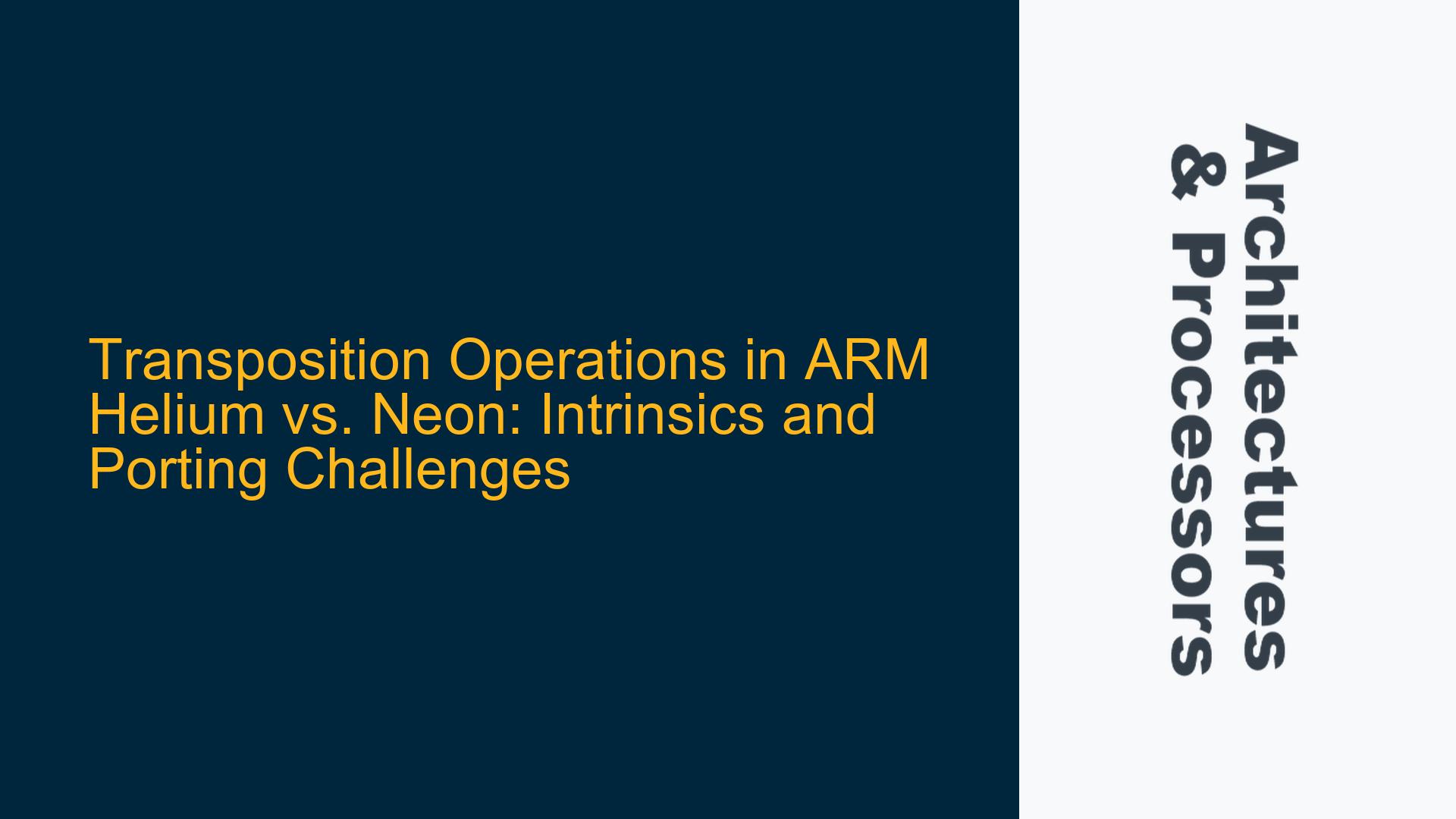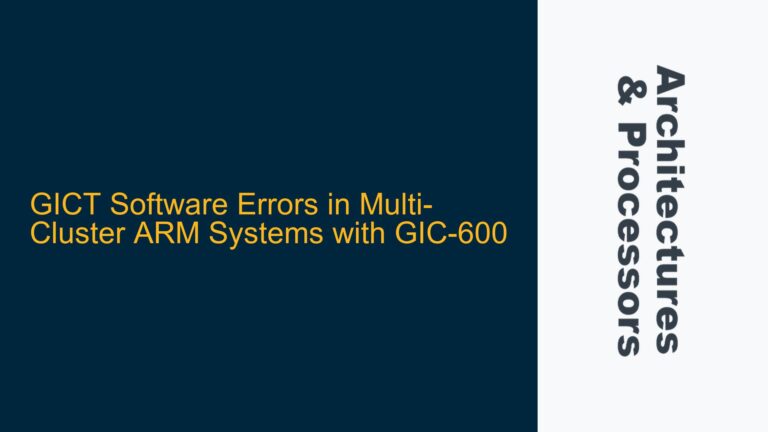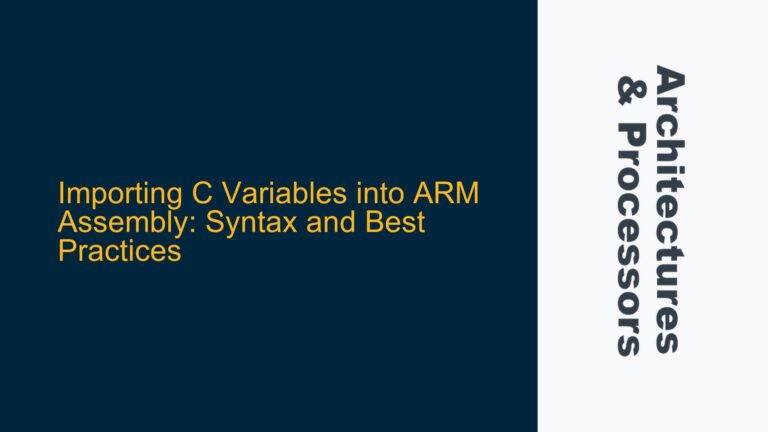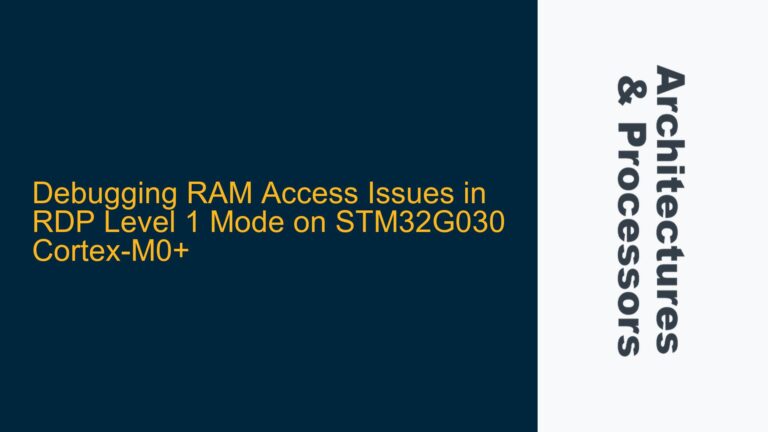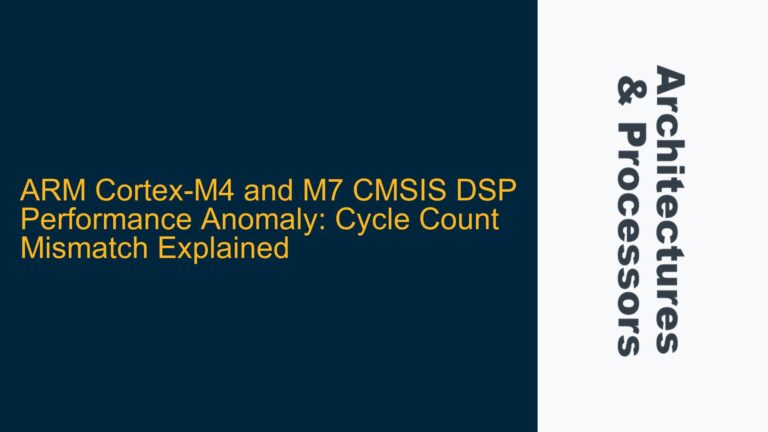Transposition Intrinsics in ARM Helium vs. Neon: Key Differences and Challenges
When porting code from ARM Cortex-A series processors (utilizing Neon SIMD) to Cortex-M series processors (utilizing Helium SIMD under ARMv8.1-M architecture), one of the most critical challenges is the handling of transposition operations. Transposition operations, such as those performed by Neon intrinsics like vtrn, vzip, and vuzp, are essential for rearranging data elements within vector registers to optimize algorithms like matrix operations, FFTs, and image processing. However, Helium, the M-profile Vector Extension (MVE), introduces a different set of intrinsics and architectural behaviors that require careful consideration.
The primary issue arises from the architectural differences between Neon and Helium. Neon, designed for high-performance applications in Cortex-A processors, offers a rich set of transposition intrinsics that operate on 64-bit and 128-bit vectors. In contrast, Helium, optimized for power-efficient embedded systems in Cortex-M processors, provides a more limited set of intrinsics and operates on smaller vector sizes (typically 128-bit but with different lane configurations). This discrepancy necessitates a thorough understanding of both architectures to ensure efficient code porting.
Missing or Mismatched Intrinsics: Helium’s Limited Transposition Support
The absence of direct equivalents for Neon’s transposition intrinsics in Helium is a significant hurdle. Neon’s vtrn, vzip, and vuzp intrinsics are designed to perform specific data rearrangement tasks:
vtrntransposes pairs of elements from two vectors.vzipinterleaves elements from two vectors.vuzpde-interleaves elements from two vectors.
In Helium, these operations are not natively supported through direct intrinsics. Instead, developers must rely on a combination of Helium’s available intrinsics and manual data manipulation to achieve similar results. For example, Helium provides intrinsics like vmov, vld, and vst for data movement, as well as vadd, vmul, and other arithmetic operations. However, these intrinsics do not directly address the need for transposition, requiring creative use of load/store operations and arithmetic manipulations to emulate the desired behavior.
The root cause of this limitation lies in Helium’s design philosophy. Helium prioritizes power efficiency and area optimization over the extensive feature set found in Neon. This trade-off results in a reduced set of intrinsics and a focus on operations that are most beneficial for embedded applications, such as digital signal processing (DSP) and machine learning (ML) workloads. Consequently, developers must adapt their code to leverage Helium’s strengths while compensating for its limitations.
Emulating Transposition Operations in Helium: Techniques and Best Practices
To address the lack of direct transposition intrinsics in Helium, developers can employ several techniques to emulate the functionality of Neon’s vtrn, vzip, and vuzp operations. These techniques involve a combination of data loading, arithmetic operations, and careful management of vector registers.
Emulating vtrn in Helium
The vtrn intrinsic in Neon transposes pairs of elements from two vectors. For example, given two 64-bit vectors A and B, vtrn swaps the even-indexed elements of A with the odd-indexed elements of B. In Helium, this operation can be emulated using a combination of load/store operations and arithmetic manipulations.
First, load the input vectors into Helium’s 128-bit registers. Then, use Helium’s vmov intrinsic to rearrange the elements within the registers. For example, to transpose two 32-bit elements, you can use the following steps:
- Load the input vectors into two 128-bit registers.
- Use
vmovto swap the lower 32-bit elements of the first register with the upper 32-bit elements of the second register. - Store the results back to memory or use them in subsequent operations.
This approach requires careful management of vector lanes and may involve multiple steps to achieve the desired transposition. While it is less efficient than Neon’s native vtrn intrinsic, it provides a viable workaround for Helium-based systems.
Emulating vzip in Helium
The vzip intrinsic in Neon interleaves elements from two vectors. For example, given two 64-bit vectors A and B, vzip produces a new vector where the elements of A and B are interleaved. In Helium, this operation can be emulated using a combination of load/store operations and arithmetic manipulations.
To emulate vzip in Helium, follow these steps:
- Load the input vectors into two 128-bit registers.
- Use Helium’s
vldandvstintrinsics to load and store data in an interleaved manner. - Use arithmetic operations to combine the elements from the two registers into a single interleaved vector.
This approach requires careful management of vector lanes and may involve multiple steps to achieve the desired interleaving. While it is less efficient than Neon’s native vzip intrinsic, it provides a viable workaround for Helium-based systems.
Emulating vuzp in Helium
The vuzp intrinsic in Neon de-interleaves elements from two vectors. For example, given two 64-bit vectors A and B, vuzp produces two new vectors where the elements of A and B are de-interleaved. In Helium, this operation can be emulated using a combination of load/store operations and arithmetic manipulations.
To emulate vuzp in Helium, follow these steps:
- Load the input vectors into two 128-bit registers.
- Use Helium’s
vldandvstintrinsics to load and store data in a de-interleaved manner. - Use arithmetic operations to separate the elements from the two registers into two de-interleaved vectors.
This approach requires careful management of vector lanes and may involve multiple steps to achieve the desired de-interleaving. While it is less efficient than Neon’s native vuzp intrinsic, it provides a viable workaround for Helium-based systems.
Performance Considerations and Optimizations
When emulating transposition operations in Helium, performance is a critical consideration. The lack of native transposition intrinsics means that these operations will inherently be less efficient than their Neon counterparts. However, there are several strategies to mitigate this performance impact:
-
Minimize Data Movement: Reduce the number of load/store operations by maximizing the use of vector registers. This can be achieved by carefully planning the sequence of operations and reusing registers wherever possible.
-
Leverage Helium’s Strengths: Focus on operations that Helium excels at, such as arithmetic operations and data movement. By optimizing these operations, you can partially offset the performance penalty of emulating transposition.
-
Batch Processing: Whenever possible, process multiple elements in parallel to make the most of Helium’s vector processing capabilities. This can help amortize the overhead of emulating transposition operations over a larger number of elements.
-
Algorithmic Adjustments: Consider modifying the algorithm to reduce the need for transposition operations. For example, if the algorithm can be restructured to operate on data in its original layout, the need for transposition may be eliminated or reduced.
Example Code: Emulating vtrn in Helium
Below is an example of how to emulate the vtrn operation in Helium using a combination of load/store operations and arithmetic manipulations:
#include <arm_mve.h>
void emulate_vtrn(int32_t *a, int32_t *b, int32_t *result_a, int32_t *result_b) {
// Load input vectors into Helium registers
int32x4_t vec_a = vld1q_s32(a);
int32x4_t vec_b = vld1q_s32(b);
// Perform transposition using vmov and arithmetic operations
int32x4_t temp_a = vmovq_s32(vec_a);
int32x4_t temp_b = vmovq_s32(vec_b);
// Swap elements
temp_a = vsetq_lane_s32(vgetq_lane_s32(vec_b, 1), temp_a, 1);
temp_b = vsetq_lane_s32(vgetq_lane_s32(vec_a, 1), temp_b, 1);
// Store results
vst1q_s32(result_a, temp_a);
vst1q_s32(result_b, temp_b);
}
This code demonstrates how to emulate the vtrn operation in Helium by manually swapping elements between two vectors. While this approach is less efficient than using Neon’s native vtrn intrinsic, it provides a viable workaround for Helium-based systems.
Conclusion
Porting code from ARM Cortex-A series processors (utilizing Neon SIMD) to Cortex-M series processors (utilizing Helium SIMD) presents significant challenges, particularly when it comes to transposition operations. The lack of direct equivalents for Neon’s vtrn, vzip, and vuzp intrinsics in Helium necessitates creative workarounds and careful optimization. By understanding the architectural differences between Neon and Helium, and by employing techniques such as manual data manipulation and algorithmic adjustments, developers can successfully port their code while maintaining acceptable performance levels. However, it is essential to recognize that these workarounds may not fully match the efficiency of Neon’s native transposition intrinsics, and performance trade-offs should be carefully considered.
